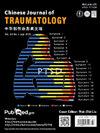Analysis of risk factors, pathogenic bacteria characteristics, and drug resistance of postoperative surgical site infection in adults with limb fractures
IF 1.9
4区 医学
Q2 ORTHOPEDICS
引用次数: 0
Abstract
Purpose
We carried out the study aiming to explore and analyze the risk factors, the distribution of pathogenic bacteria, and their antibiotic-resistance characteristics influencing the occurrence of surgical site infection (SSI), to provide valuable assistance for reducing the incidence of SSI after traumatic fracture surgery.
Methods
A retrospective case-control study enrolling 3978 participants from January 2015 to December 2019 receiving surgical treatment for traumatic fractures was conducted at Tangdu Hospital of Air Force Medical University. Baseline data, demographic characteristics, lifestyles, variables related to surgical treatment, and pathogen culture were harvested and analyzed. Univariate analyses and multivariate logistic regression analyses were used to reveal the independent risk factors of SSI. A bacterial distribution histogram and drug-sensitive heat map were drawn to describe the pathogenic characteristics.
Results
Included 3978 patients 138 of them developed SSI with an incidence rate of 3.47% postoperatively. By logistic regression analysis, we found that variables such as gender (males) (odds ratio (OR) = 2.012, 95% confidence interval (CI): 1.235 − 3.278, p = 0.005), diabetes mellitus (OR = 5.848, 95% CI: 3.513 − 9.736, p < 0.001), hypoproteinemia (OR = 3.400, 95% CI: 1.280 − 9.031, p = 0.014), underlying disease (OR = 5.398, 95% CI: 2.343 − 12.438, p < 0.001), hormonotherapy (OR = 11.718, 95% CI: 6.269 − 21.903, p < 0.001), open fracture (OR = 29.377, 95% CI: 9.944 − 86.784, p < 0.001), and intraoperative transfusion (OR = 2.664, 95% CI: 1.572 − 4.515, p < 0.001) were independent risk factors for SSI, while, aged over 59 years (OR = 0.132, 95% CI: 0.059 − 0.296, p < 0.001), prophylactic antibiotics use (OR = 0.082, 95% CI: 0.042 − 0.164, p < 0.001) and vacuum sealing drainage use (OR = 0.036, 95% CI: 0.010 − 0.129, p < 0.001) were protective factors. Pathogens results showed that 301 strains of 38 species of bacteria were harvested, among which 178 (59.1%) strains were Gram-positive bacteria, and 123 (40.9%) strains were Gram-negative bacteria. Staphylococcus aureus (108, 60.7%) and Enterobacter cloacae (38, 30.9%) accounted for the largest proportion. The susceptibility of Gram-positive bacteria to Vancomycin and Linezolid was almost 100%. The susceptibility of Gram-negative bacteria to Imipenem, Amikacin, and Meropenem exceeded 73%.
Conclusion
Orthopedic surgeons need to develop appropriate surgical plans based on the risk factors and protective factors associated with postoperative SSI to reduce its occurrence. Meanwhile, it is recommended to strengthen blood glucose control in the early stage of admission and for surgeons to be cautious and scientific when choosing antibiotic therapy in clinical practice.
分析成人四肢骨折术后手术部位感染的风险因素、致病菌特征和耐药性。
目的探讨和分析影响手术部位感染(SSI)发生的危险因素、病原菌分布及其耐药特征,为降低创伤性骨折术后SSI的发生提供有价值的帮助。方法对2015年1月至2019年12月在空军医科大学唐都医院接受外伤性骨折手术治疗的3978例患者进行回顾性病例对照研究。收集和分析基线数据、人口统计学特征、生活方式、与手术治疗相关的变量和病原体培养。采用单因素分析和多因素logistic回归分析揭示SSI的独立危险因素。绘制细菌分布直方图和药敏热图描述病原特征。结果3978例患者术后发生SSI 138例,术后发生率为3.47%。通过logistic回归分析,我们发现性别(男性)(优势比(OR) = 2.012, 95%可信区间(CI): 1.235 ~ 3.278, p = 0.005)、糖尿病(OR = 5.848, 95% CI: 3.513 ~ 9.736, p <;0.001)、低蛋白血症(OR = 3.400, 95% CI: 1.280 ~ 9.031, p = 0.014)、潜在疾病(OR = 5.398, 95% CI: 2.343 ~ 12.438, p <;0.001),激素治疗(OR = 11.718, 95% CI: 6.269 ~ 21.903, p <;0.001),开放性骨折(OR = 29.377, 95% CI: 9.944−86.784,p <;0.001),术中输血(OR = 2.664, 95% CI: 1.572 ~ 4.515, p <;0.001)是SSI的独立危险因素,而年龄在59岁以上(OR = 0.132, 95% CI: 0.059 ~ 0.296, p <;0.001),预防性抗生素使用(OR = 0.082, 95% CI: 0.042 - 0.164, p <;0.001)和真空密封引流使用(OR = 0.036, 95% CI: 0.010−0.129,p <;0.001)是保护因素。病原菌结果显示,共检获38种细菌301株,其中革兰氏阳性菌178株(59.1%),革兰氏阴性菌123株(40.9%)。金黄色葡萄球菌(108株,60.7%)和阴沟肠杆菌(38株,30.9%)占比最大。革兰氏阳性菌对万古霉素和利奈唑胺的敏感性几乎为100%。革兰氏阴性菌对亚胺培南、阿米卡星、美罗培南的敏感性超过73%。结论骨科医生需要根据与术后SSI相关的危险因素和保护因素制定相应的手术方案,以减少SSI的发生。同时,建议在入院早期加强血糖控制,临床医生在选择抗生素治疗时要谨慎、科学。
本文章由计算机程序翻译,如有差异,请以英文原文为准。
求助全文
约1分钟内获得全文
求助全文
来源期刊

Chinese Journal of Traumatology
ORTHOPEDICS-
CiteScore
3.80
自引率
4.80%
发文量
1707
审稿时长
28 weeks
期刊介绍:
Chinese Journal of Traumatology (CJT, ISSN 1008-1275) was launched in 1998 and is a peer-reviewed English journal authorized by Chinese Association of Trauma, Chinese Medical Association. It is multidisciplinary and designed to provide the most current and relevant information for both the clinical and basic research in the field of traumatic medicine. CJT primarily publishes expert forums, original papers, case reports and so on. Topics cover trauma system and management, surgical procedures, acute care, rehabilitation, post-traumatic complications, translational medicine, traffic medicine and other related areas. The journal especially emphasizes clinical application, technique, surgical video, guideline, recommendations for more effective surgical approaches.
 求助内容:
求助内容: 应助结果提醒方式:
应助结果提醒方式:


